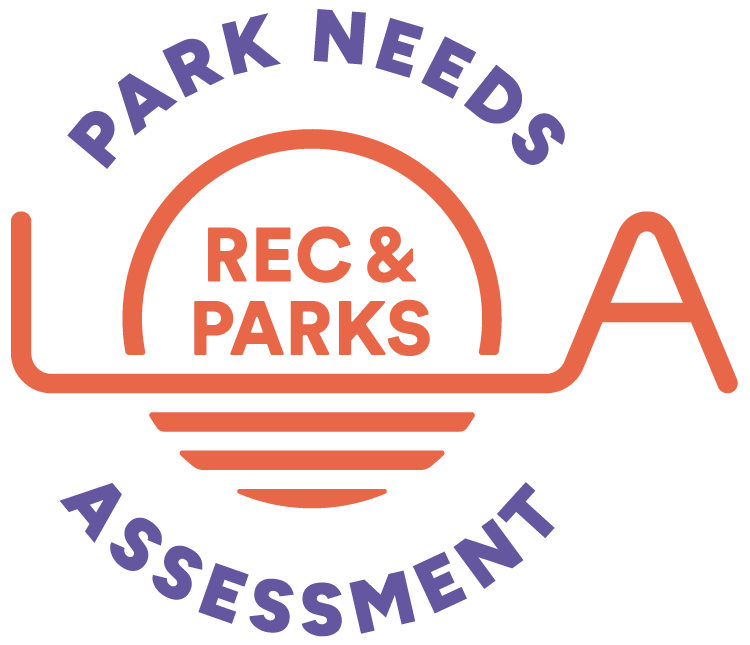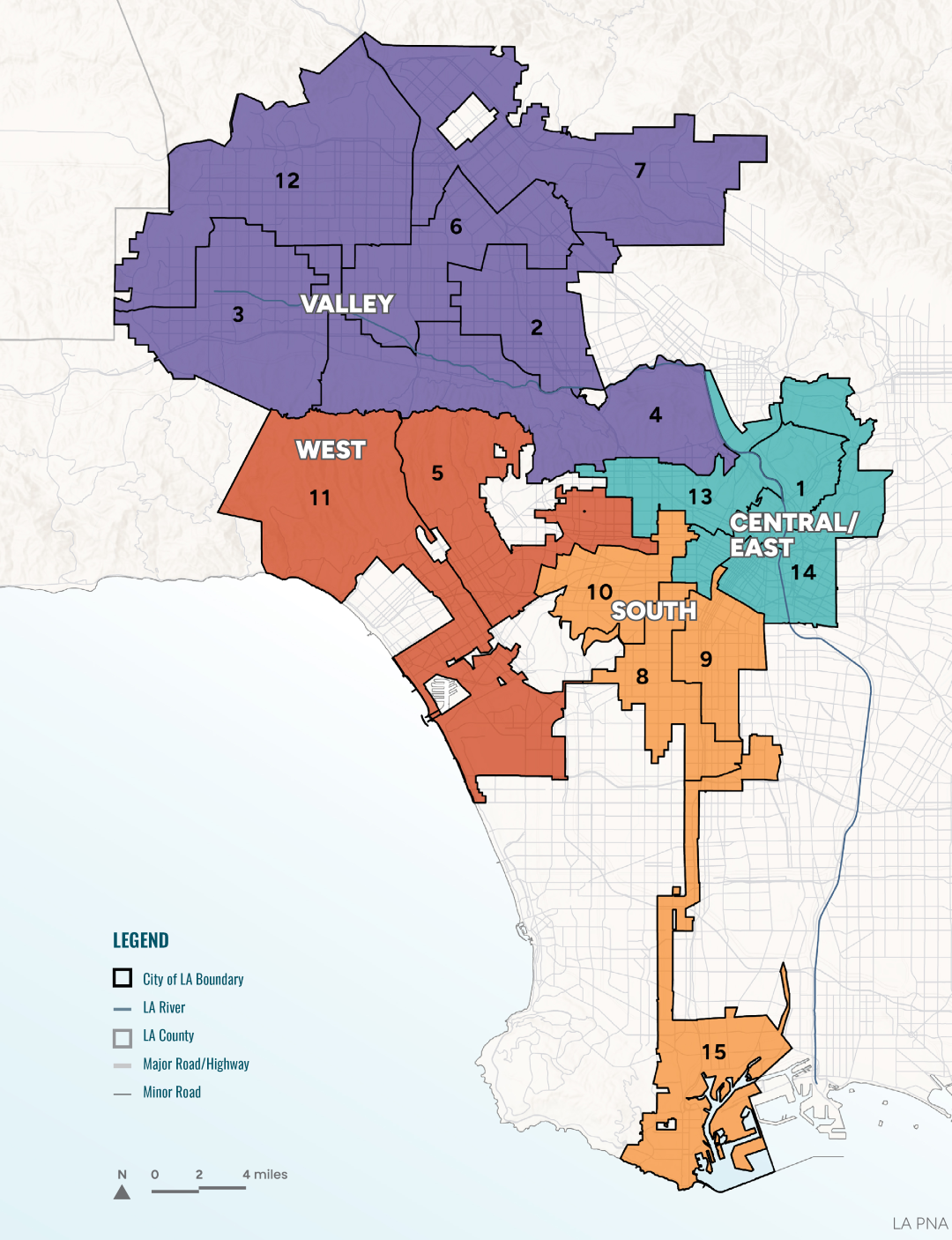To provide a more nuanced analysis of park needs grounded in the lived realities of Angelenos, the PNA divides the City into four geographic regions: East/Central, South, West, and the Valley.
This framework acknowledges that there are different needs and pressures in each region, from disparities in park access and recreational resources to differences in community priorities.
By incorporating a view of the distinct issues and opportunities in each region, the PNA can help RAP tailor its actions to the needs in different parts of the City. Chapter 9 provides a more detailed overview of each region, including survey results, demographic snapshots, and feedback from residents.

